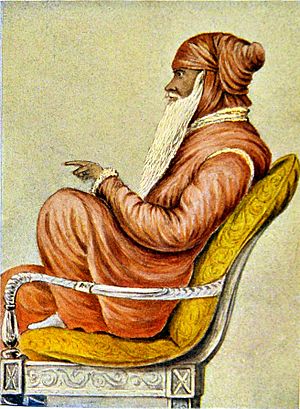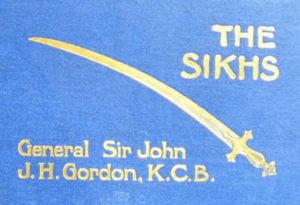John James Hood Gordon facts for kids
Quick facts for kids
Sir
John James Hood Gordon
|
|
|---|---|
| Born | 12 January 1832 |
| Died | 2 November 1908 (aged 76) Edinburgh, Scotland |
| Buried | |
| Allegiance | |
| Service | |
| Years of service | 1849–1908 |
| Rank | General |
| Commands held |
|
| Alma mater | Scottish Naval and Military Academy |
| Spouse(s) |
Ella Gordon
(m. 1871–1903) |
| Children | two |
| Relations |
|
| Other work |
|
Sir John James Hood Gordon (born January 12, 1832 – died November 2, 1908) was a very important general in the British Army. He had a long and interesting career, serving in many different parts of the world.
Contents
Early Life and Family
John Gordon was born on January 12, 1832, in Aberdeen, Scotland. He was a twin, and his brother was named Sir Thomas Edward Gordon. Their father, Captain William Gordon, was also a soldier.
John and Thomas were the youngest of five children. They both went to school in Edinburgh, Scotland. Amazingly, both brothers joined the British Army on the same day! They both became generals and were even knighted, which means they received the title "Sir."
Joining the Army
John and his twin brother started their army careers in 1849. John first joined the 74th (Highland) Regiment of Foot. Soon after, he moved to the 29th Foot regiment.
Serving in India
John Gordon spent many years serving in India. He was part of the Indian Mutiny campaign in 1857–1858. During this time, he fought in several battles and sieges, including the important siege and capture of Lucknow. He received a medal for his bravery.

He continued to serve in India for eighteen more years, moving up in rank. By 1875, he was in charge of the 29th Punjab Infantry, a regiment made up of soldiers from the Punjab region of India.
Adventures in Afghanistan
In 1878, Gordon played a big part in the Second Anglo-Afghan War. He commanded his regiment, the 29th Punjabis. He led a scouting mission that helped his commander, Sir Frederick Roberts, change his battle plans.
Gordon's regiment was at the front of a difficult night march. Later, he was involved in another expedition, including an attack on a place called Zava. For his service in this war, he received the Afghanistan Medal.
Operations in Burma
From 1886 to 1887, Gordon commanded a brigade during the Third Anglo-Burmese War. He led operations that helped open up new areas between Manipur and Kendat. His troops even built a road to connect Manipur with Upper Burma and the Chindwin River.
He later wrote an article about his experiences, called "Overland from India to Upper Burma."
Later Career and Honors
After his time in India and Burma, Gordon returned to the United Kingdom. In 1890, he became an assistant military secretary for the India Office. This office helped manage affairs between Britain and India.
He continued to be promoted, becoming a lieutenant-general in 1891 and a full general in 1894. In 1897, he joined the Council of India, where he served for ten years.
For his long and distinguished service, he received high honors. He was made a Knight Commander of the Order of the Bath (KCB) in 1898 and then a Knight Grand Cross (GCB) in 1908. These titles meant he was "Sir John James Hood Gordon."
Personal Life
In 1871, John Gordon married Ella. She was his cousin and the daughter of Edward Gordon, Baron Gordon of Drumearn. John and Ella had two sons who grew up to be army officers, just like their father. Sadly, one of their sons, John Frederick Strathearn Gordon, was killed in the First World War.
Gordon was also a talented writer and artist. He wrote and illustrated a book called The Sikhs, which was published in 1904.
He spent his later years living in London and Edinburgh. Sir John James Hood Gordon passed away in Edinburgh on November 2, 1908. He was buried in Dean Cemetery in Edinburgh, where his family monument can be found.



